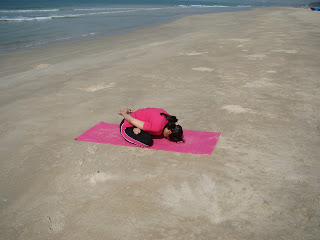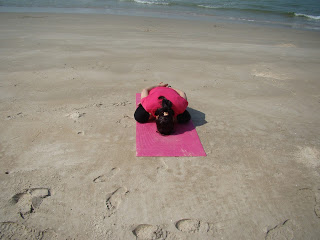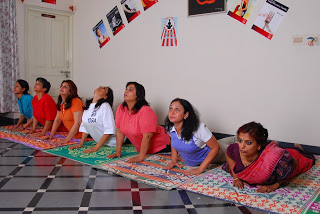By
Dr Rita Khanna,
(36 years experience in Teaching Yoga)
Yoga Practices for Digestive Disorders (Colitis)
• Colitis is a general term indicating an inflammatory condition of the large bowel, and almost invariably, of the rectum. Two broad categories of this condition are usually seen – specific and idiopathic. The specific type of colitis commonly arises from protozoal and/or tubercular infiltrations, although the latter form is quite rare. Amoebic colitis forms the major group of the specific type. The idiopathic variety cannot be traced to a specific cause and is often termed ‘ulcerative colitis’.



Bhujang Asana
• Medical knowledge has advanced a great deal today in all spheres of inquiry but ulcerative colitis is one condition in which science has made little progress. The present management of this condition remains unsatisfactory. The physician is far more able to control the disease than cure it. Antibiotics and the intestinal disinfectants for the control of diarrhoea have been the chief medicine so far.
The introduction of cortico-steroids was thought to revolutionize the management of this disease but the side effects of these drugs are as serious as the disease itself, while their control of the primary condition remains poor. The latest celebrated drug, salazopyrine, is claimed to have minimal side effects, but it has the drawback of creating dependency, and the condition worsens if there is no proper supply of the medicine. The surgical approach is total colectomy (removal of the colon) or proctocolectomy with ileostomy, in which the anus is removed along with the colon, necessitating the construction of an alternative opening in the abdominal wall. Both procedures cause permanent and severe restrictions in the patient’s lifestyle.
• The psychological aspect of colitis is also significant. Recent studies have shown that stress and strain are the major contributory factors in causing and aggravating the disease & confirmed that environmental stress, personal stress and stress resulting from natural calamities were important factors. So the psychosomatic nature of the disease must be kept in mind while undertaking its treatment.
YOGA PRACTICES FOR DIGESTIVE DISORDERS
Chronic colitis is a syndrome in which Agni (gastric fire), the digestive power, is supposed to be at fault. When Agni becomes depressed, undigested waste material accumulates and is passed in the stools. It can manifest as high cholesterol, blood disorders, fatigue syndromes, tumours, cysts and skin conditions. So the aim of treatment should be to enhance the potency of Agni, thereby reducing the formation of undigested waste material. Yogic exercises, by virtue of their specificity, work as catalytic agents for stabilizing the Agni at a higher level even if the medicines are withdrawn.
This in itself is an important achievement, as medicines cannot be used permanently. The disease can only be considered as cured when the Agni is balanced without the use of any external medicine. The Yogic practices which stimulate and normalize the Agni are selected, in accordance with various classical texts of Yoga including, ‘Gheranda Samhita’ and ‘Hatha Yoga Pradipika’. These Yogic practices which stimulate and normalize the Agni are:
Bhujangasana
“By practicing this Bhujangasana, Dehagni- the heat of the body- increases, all diseases are destroyed and Kundalini is aroused.”
Gheranda Samhita, 2/43
Mayurasana
“Mayurasana soon destroys all the diseases caused by Doshas (undigested material) in the stomach, and wards off Gulmas (tumors of the abdomen). It kindles the Jatharagni (gastric fire) and completely digests all the unwholesome and overeaten food- even poison.”
Hatha Yoga Pradipika, 2/31
Paschimottanasana
“This Paschimottanasana, foremost among the Asanas, directs the passage of Prana along the back. It kindles the gastric fire (Jatharagni), reduces the belly and bestows health upon the aspirants.”
Hatha Yoga Pradipika, 1/27
Matsyendrasana
“The practice of Matsyendrasana, which stimulates the Jatharagni (gastric fire) and is a weapon to destroy the diseases around the umbilicus, bestows upon those persons who practise it arousal of Kundalini and stability of the Chandra (mind).”
Hatha Yoga Pradipika, 1/27
Sarvangasana
“The practice of Sarvangasana increases the Jatharagni (gastric heat) of a regular practitioner. One who practices it daily should procure (and eat) ample food. If he eats insufficient food, the increasing fire soon consumes his body.”
Hatha Yoga Pradipika, 3/79
Pranayama
“A Yogi should always practise the beneficial Shitali Kumbhaka. He will never suffer from indigestion and disorder of Kapha (Phlegm) and Pitta (Bile).”
Gheranda Samhita, 2/65
Shatkarmas
“Nauli, the crown of Hatha Yoga practices, stimulates the digestive metabolism and brings about a feeling of wellbeing.”
Hatha Yoga Pradipika, 2/35
Each of these Asanas should be done two or three times, and maintained for a duration of 20-30 seconds. Shavasana should be practised once daily for 15-20 minutes, and Pranayama for 10 minutes once daily under guidance. Be careful if you have high or low blood pressure or heart problems. Leave at least four hours from your last meal before doing these practices. Along with Yoga therapy, dietary restrictions are must for the sufferers of colitis problems.
HEALTHY EATING HABITS
• Eat according to your constitution.
• Eat fresh food that is organically grown.
• Eat Satvic foods; light, fresh, rejuvenative.
• Minimize the use of leftovers, canned, frozen or preserved foods.
• Do not eat lots of raw and cooked food together.
• Do not eat contraindicated foods: Dairy and fruit; melon after other food; fruits with other food; fish and milk; eggs with milk etc.
• Eat seasonal foods.
• Avoid excessive fasting or excessive eating. The recommendation is to eat until you are 50% full, have 25% liquids and leave the remaining space for Prana to circulate.
• Only eat when hungry and drink when thirsty.
• When you travel adjust your diet slowly as the change in water, food and climate can all adversely affect your digestion.
• Antidote extreme qualities of food with digestive spices
CONCLUSION
To strengthen Agni, all twists- forward bends, sideways bends and postures that put physical pressure on the abdomen- benefit the digestive system. All breathing practices help digestion. Kapalabhatii and Bhastrika work by stimulating the whole system, others, such as Nadi Shodhana and Brahmari work by relaxing any tension and freeing digestion from the trappings of stress.
Relaxation has very therapeutic effects as digestion really works when we are calm and the parasympathetic nervous system is predominant. When we are ‘on alert’ busying around and the sympathetic nervous system is running then digestion can literally stop.
Even Agnisara Kriya is a simple and effective practice that helps to clear low digestive fire, gas, constipation as well as massaging the digestive organs and stimulating the appetite. It is quite evident that Yoga acts as a buffer in the treatment of chronic colitis and provides permanent relief from the symptoms of colitis.




